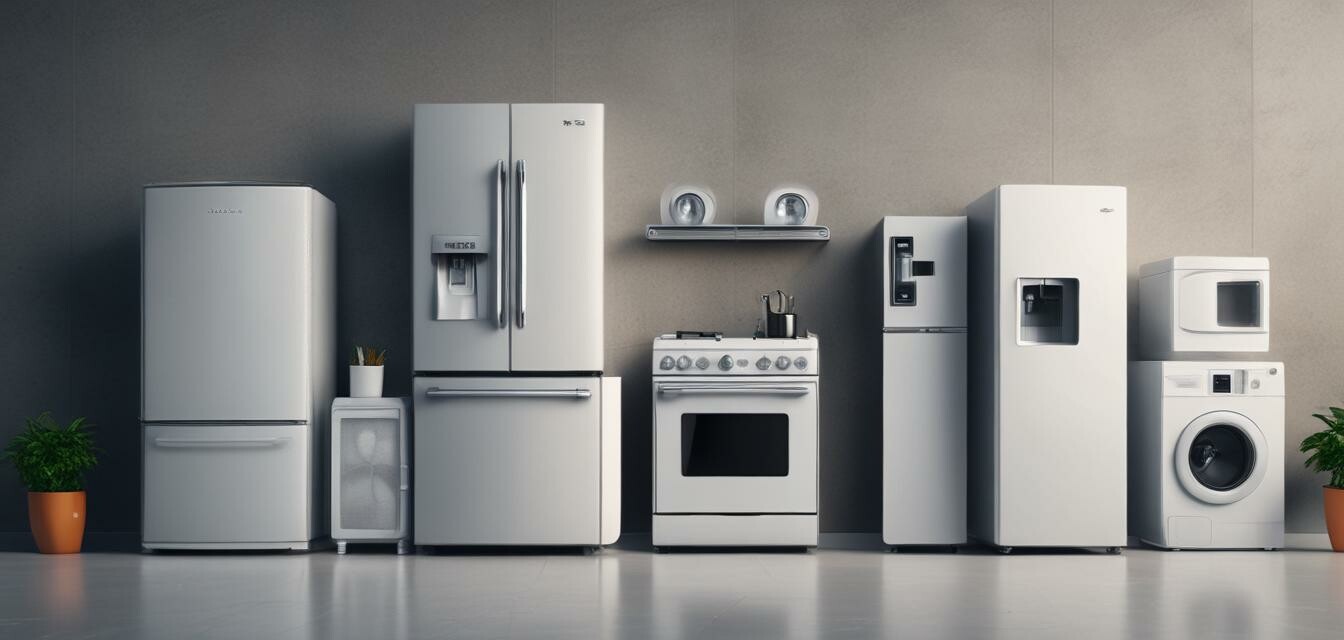
The Future of Energy Efficiency in Home Appliance Design
Key Takeaways
- Energy efficiency continues to be a priority for appliance design.
- Consumers demand sustainable materials and smart technology.
- Innovations are reshaping energy standards and regulations.
- Design trends focus on functionality and aesthetic appeal.
- Staying informed can help consumers make better purchasing decisions.
As we approach 2025, the landscape of home appliances is undergoing a significant transformation driven by a commitment to energy efficiency and sustainability. Consumers are more aware than ever of their environmental impact and are increasingly seeking products that not only meet their practical needs but also align with their values.
Evolving Design Trends
The design of home appliances is evolving in response to rigorous energy standards set by governments and the growing market demand for sustainable practices. Let’s explore how these design trends are manifesting.
Integration of Smart Technology
Smart appliances are at the forefront of design innovation. These appliances are equipped with sensors and connectivity features that promote energy conservation through user-friendly interfaces.
Benefits of Smart Technology in Appliances
- Remote monitoring and control to reduce energy consumption.
- Automated settings based on energy usage patterns.
- Real-time feedback about energy consumption.
Use of Sustainable Materials
As consumers prioritize sustainability, appliance manufacturers are shifting towards eco-friendly materials, such as recycled plastics and biodegradable components. This shift not only reduces the carbon footprint but also promotes a circular economy.
Examples of Sustainable Materials
- Recycled metals in fridge construction.
- Natural fibers used in appliance insulation.
- Biodegradable components in washing machines.
Future Regulations and Energy Standards
Looking ahead, stricter energy efficiency regulations are likely to evolve. Compliance with these standards will drive innovation, pushing manufacturers to rethink their designs continuously.
Likely Future Standards
| Year | Regulation Type | Description |
|---|---|---|
| 2025 | Minimum Energy Efficiency Standards | All appliances must meet higher efficiency ratings. |
| 2025 | Labeling Requirements | More comprehensive energy labeling for consumer awareness. |
| Future | Carbon Emission Regulations | Limits on emissions during appliance production. |
Consumer Trends Influencing Design
Another vital aspect of modern appliance design is the shifting preferences of consumers. Here are some key consumer trends shaping the future:
- Increased Awareness: Consumers are now more informed about energy usage.
- Aesthetic Appeal: Energy-efficient appliances that are stylish and blend into home decor.
- Multi-Functionality: Demand for appliances that offer multiple functions to save space and energy.
Maximizing Energy Savings
As a consumer, understanding how to maximize your energy savings is essential. Here are some best practices:
Tips for Maximizing Energy Savings
- Regular maintenance of appliances to enhance energy efficiency.
- Utilizing energy-efficient settings whenever possible.
- Educating yourself about eco-friendly appliance features.
- Monitoring energy consumption for better management.
Staying Ahead with Trends
By keeping up with trends in energy-efficient appliance designs, you can make informed choices for your home that will not only benefit you economically but also contribute to a more sustainable future. For more in-depth information on energy-efficient appliances, check out our Buying Guides and explore our Tips and How-to Articles.
Pros
- Improved energy savings leading to cost reduction.
- Increased appliance functionality and convenience.
- Enhanced aesthetic appeal in home designs.
Cons
- Initial costs may be higher for energy-efficient models.
- Not all brands offer advanced eco-friendly designs.
Conclusion
As we move towards 2025, the evolution of energy-efficient appliances will continue to intertwine innovation with consumer desires for sustainability. By being proactive in understanding these trends, consumers can make better decisions and embrace the future of home appliance design.
